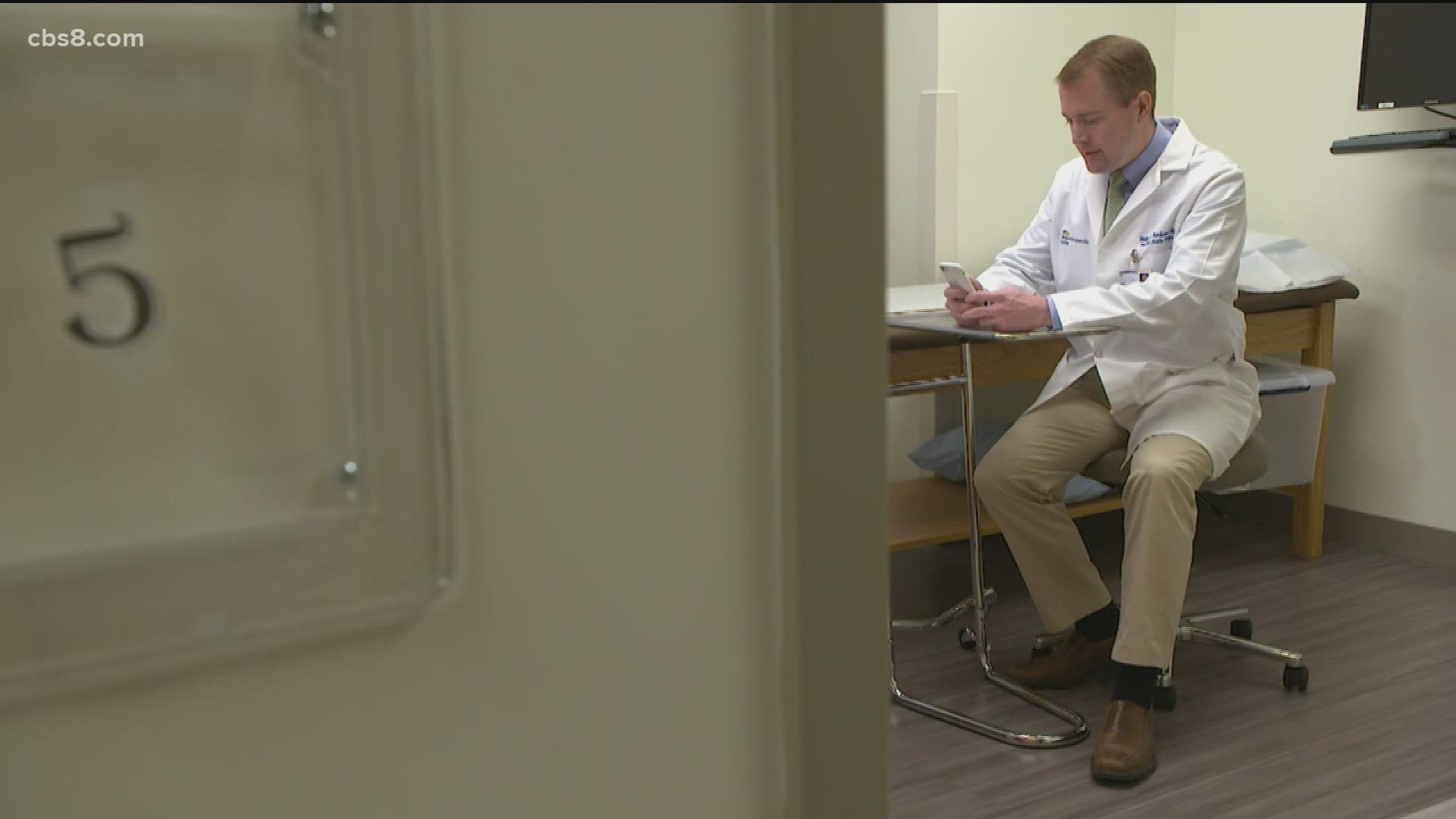SAN DIEGO — The future of doctor visits is in telemedicine. Local healthcare providers say before the pandemic virtual visits were still new, but during COVID restrictions telemedicine skyrocketed. At Sharp Healthcare it went from a modest 200 telehealth visits a month to 10,000 a day.
“Our yearly goal we accomplished in about a single day,” said Dr. Elan Hekier, M.D., Chief Information and Innovation Officer, Sharp-Reese-Stealy Medical Group.
At Kaiser Permanente, almost all of their outpatient appointments were telemedicine compared to 30% pre-pandemic.
“During the pandemic, we had months that we got up to low to mid 90’s (percent),” said Dr. Brian Bronson, M.D., Chief of Family Medicine, Kaiser Permanente San Diego.
At Scripps Health 71% of visits were telemedicine.
“COVID hit and we jumped up to 60,000 visits in April from less than 20 a week,” Dr. David Wetherhold, Chief Medical Information Officer for Ambulatory Systems, Scripps Health.
UC San Diego Health says telemedicine went from less than 1% before COVID-19 to 27% from March 2020 to July 2021.
The need for telemedicine is also critical for mental health. The American Medical Association said during the pandemic mental health care made up 61.7% of nationwide telehealth visits in 2020.
While not as high in San Diego, at Sharp Healthcare, some made up half of the telemedicine visits.
“In mental health or other specialties we are seeing 51% or more of telehealth,” said Hekier.
While e-visits have dropped to about the 20% range, telemedicine helps provide equitable healthcare especially to those who can’t leave work or take city bus. Doctors hope broadband or access to technology for telemedicine will also be expanded.
“It's not just convenience for those that can afford computers but anyone who needs it and those that really need access,” said Wetherhold.
Doctors say telemedicine will not replace in-person visits or emergency situations, but it could accelerate telehealth care to remote patient monitoring at Scripps Health where patients are given tools to help diagnose them.
“We can actually do a remote examination and say alright put that stethoscope there and I can hear you. It really gets you closer to doing an in-person without being here,” said Wetherhold.
Telehealth can be done over the phone, video or text at the same level of care and there is still a co-pay for private insurance.
For Medi-Cal patients, the 2021-2022 time frame appropriates $151.1 million for the extension of telehealth flexibilities allowed during the federal public health emergency declaration, including payment parity for audio-only modalities, through December 2022, and includes $106.4 million for the coverage of remote patient monitoring.
In California, there are 13.8 million people enrolled in Medi-Cal statewide and 934,000 are enrolled in San Diego county, which is roughly 7% of Medi-Cal patients.
For Medicare patients, telehealth could go away once the public health emergency declaration is lifted.
“It’s all about access,” said Hekier.
“I'm confident that telehealth is here to stay,” said Bronson.
Congress is urging Health and Human Services Secretary Xavier Beccerra to develop a permanent and comprehensive telehealth plan for Medicare patients.
Watch: San Diegans react to possibility of another mask mandate despite high vaccination rate in county (Jul 19, 2021)

